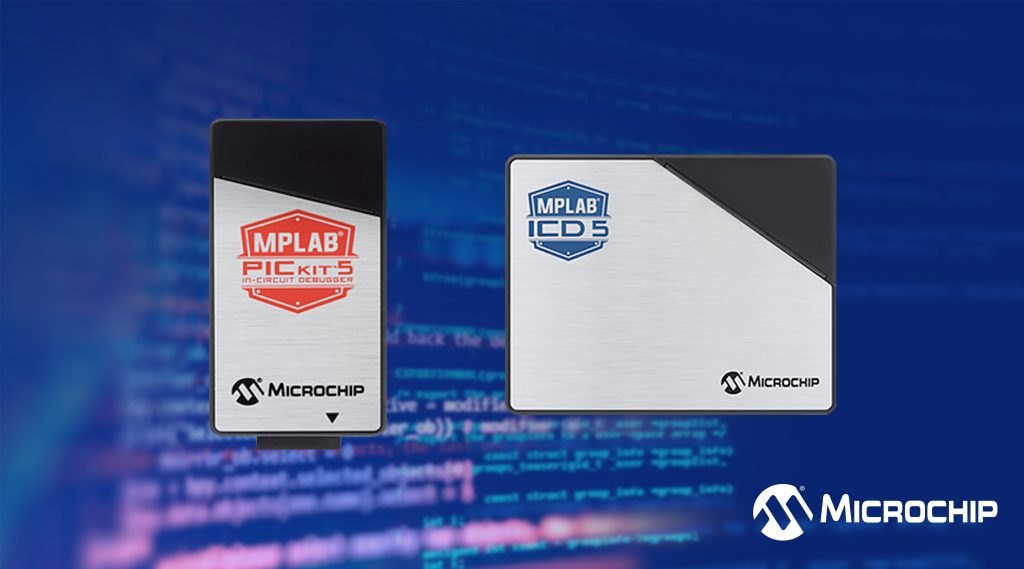Powering Target Boards and Streamlining Debugging
by Jon Gabay, engineer
Microprocessors and microcontrollers are becoming more sophisticated, incorporating mixed signal functionality, high-speed communications, interfaces, and even wireless protocols. To accommodate these advancements, emulators and debuggers have also evolved to handle the complexities of modern architecture and cores. Now, you no longer need to remove and replace a processor to connect umbilical emulators. Modern micros come equipped with built-in emulator ports, offering real-time insights into the system’s inner workings while allowing I/O, memory, breakpoints, and statistical software monitoring.
Microchip recently introduced the MPLAB® ICD 5 and the MPLAB PICkit™ 5 in-circuit debuggers and programmers, which further enhance the capabilities of emulators. These new versions cater to designs that utilize network power. Since the target design already receives power from the communications network, it makes sense for emulators and debuggers to provide network power and features that simplify the development process of network-powered methods.
The MPLAB ICD 5, powered by a USB Type C connection or Power over Ethernet, supports remote programming, debugging, and power supply. This debugger simplifies the debugging process by eliminating the need for external power connectors and wires and provides easier access to probe points on target boards or prototypes. On the other hand, the MPLAB PICkit 5, in addition to its compatibility with the MPLAB X Integrated Development Environment (IDE), can be used as part of the Programmer-To-Go (PTG) smartphone application. This enables field engineers and technicians to perform critical updates seamlessly without bulky equipment and security concerns associated with remote programming.
Emulators and debuggers can handle multicore architectures, and synchronization hooks are provided to help synchronize core operations. A data visualizer module assists engineers in monitoring the debug process at a higher level. Additionally, a code configurator simplifies the setup and alteration of special function pins for shared interfaces. Engineers can even use I/O pins as a window into the micro by establishing a UART interface, allowing an independent debug monitor to run in the background, with UART over Windows Virtual COM port (VCP) as a supported data gateway.
The emulators also feature an SD™ card interface for easy storage and loading multiple pages, facilitating quick loading and running of debug and self-test software. Assembly language programming is supported and can be chained with compiled code blocks to enhance performance in critical time-sensitive routines. Hooks are provided for real-time operating system applications, including event monitoring, variable watches, and timing of exercises. The same debugger can handle dual-core devices like ARM M7 and M0, where the M0 core performs housekeeping and device configuration while the M7 handles faster calculations and time-sensitive algorithms.
These emulators are compatible with Windows 7 (or later), macOS®, and Linux® operating systems and support a wide range of target operating voltages from 1.2 to 5.5 Volts. Power monitoring features allow debuggers to track and optimize current draw, with voltage and recent plots available for graphical representation of operations requiring attention. Both the PICkit 5 and ICD5 use high-speed USB 480Mb/sec. Ethernet connectivity at 100 Mbit/sec data rates is also supported, with wired Dynamic Host Configuration Protocol (DHCP) and Static IP addressing modes available. Furthermore, up to 1 Amp of current can power the target board over Ethernet.
The MPLAB ICD 5 and the MPLAB PICkit 5 are available now and ready to be utilized in various target applications such as IoT, Motor Control, power, RF, and remote sensors.

